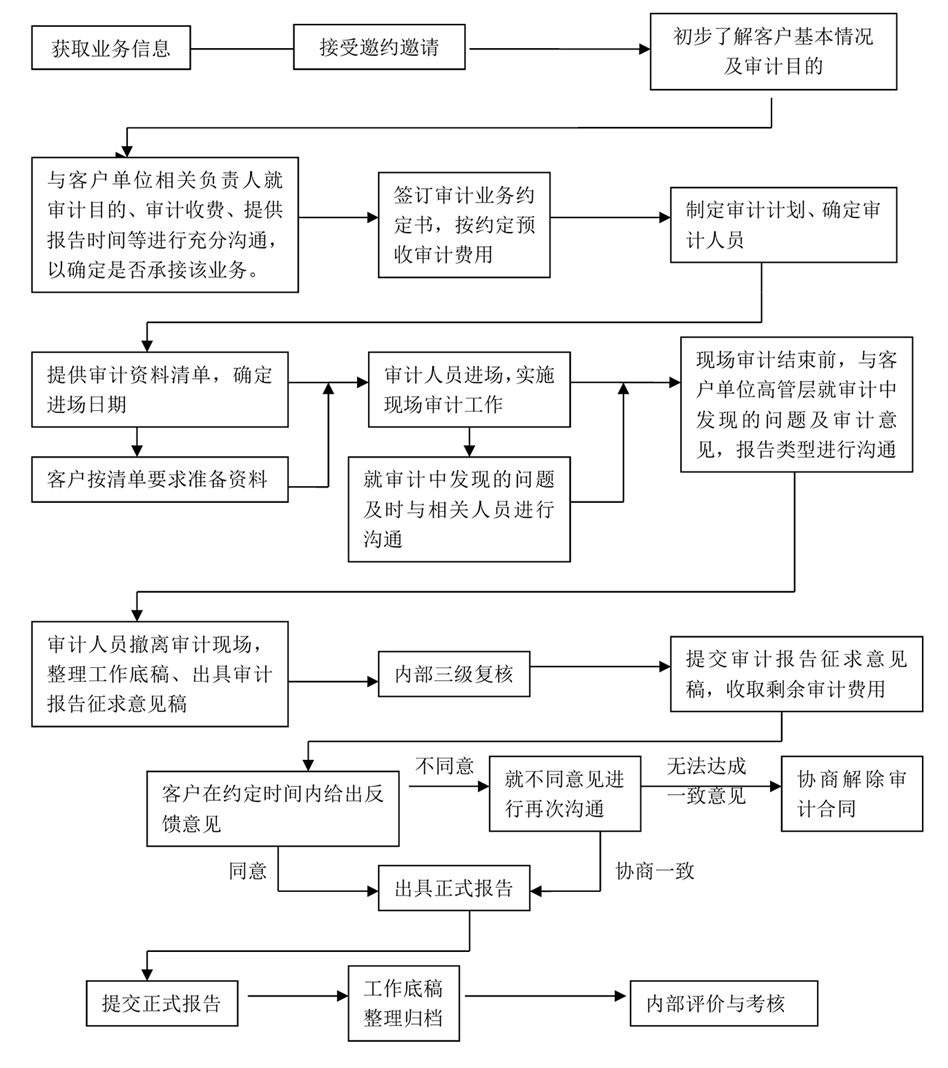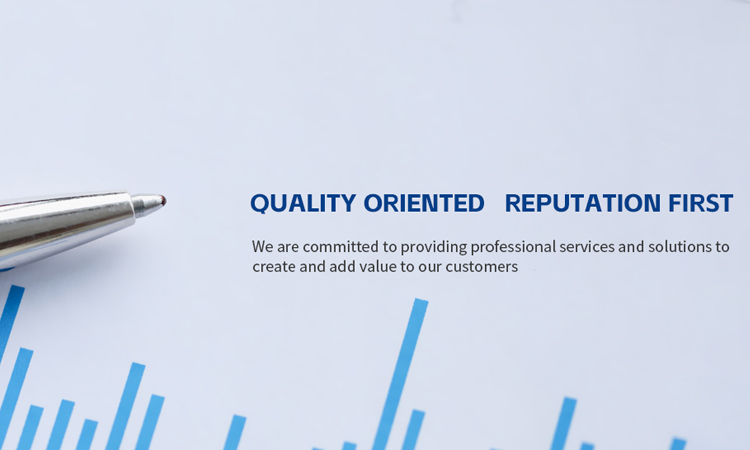1、How does your firm charge for auditing services?
Answer: Audit fees are mainly determined based on the workload, requirements, and the complexity of the entrusted project. The determination involves factors such as the number and level of professional personnel required for the audit, effective working hours, and the responsibilities associated with providing the service.
(1) Annual audit fees are typically determined based on the total assets at the end of the audit year and the annual operating income. Generally, a tiered calculation method based on total assets is used. It also considers factors such as the industry nature of the audited entity, audit duration, the presence of subsidiary companies, and the need for travel.
(2) Specialized audit fees are usually determined based on the amount of the audit project (or total actual expenditure) and the audit duration. For example, in the case of an audit of research and development (R&D) expenses, the audit fee is determined based on the total annual R&D expenses, using a tiered calculation. The determination is also influenced by factors such as the audited entity's accounting standardization level.
(3) Fees for audits related to the recognition of high-tech enterprises consist of annual audit fees (usually for 3 years, adjusted based on the actual duration if less than 3 years), R&D expenses (typically for 3 years), and specialized audit fees for high-tech income (1 year). As both annual and specialized audits are conducted simultaneously, saving some audit time, a discount may be applied to the sum of annual and specialized audit fees, and the final fee is determined based on the difficulty level of the project.
(4) Verification fees are determined based on the actual capital contributions of the shareholders being verified, using a tiered calculation.
2、How long does it generally take to issue an audit report?
Answer: The completion time for an audit report depends on several factors, including (1) the size of the entity (total assets and operating income); (2) the presence of subsidiary companies; (3) the complexity of business operations; (4) the standardization of accounting practices; (5) the timeliness of data provided by the audited entity during the audit process; (6) the response time for confirmation letters; (7) the smoothness of communication with the audited entity, etc. With active cooperation from the audited entity, the estimated time for issuing an audit report is approximately 1-2 weeks for small and micro-enterprises, 2-4 weeks for large and medium-sized enterprises, and 2-4 weeks for medium-sized high-tech enterprises. The completion time for annual or specialized audit projects for other types of enterprises depends on the workload.
3、Do your firm conduct on-site audits at the audited entity's premises?
Answer: Yes, on-site audits are a crucial part of the audit process. On-site audit work includes:
01. Collecting data, sampling accounting vouchers, and reviewing various detailed accounts and financial statements.
02. Taking inventory of cash, inventory, fixed assets, etc.
03. Understanding the business operations of the audited entity and assessing audit risks.
04. Conducting internal control testing and implementing substantive audit procedures.
05. Facilitating communication with the audited entity.
4、In addition to audit fees, does your firm charge any other fees?
Answer: Our firm only charges audit fees, and there are no other fee items. However, during the implementation of the audit, some expenses may arise, such as bank confirmation fees, which are charged by banks to the audited entity, usually ranging from 200 to 300 yuan per account. For audits conducted outside the local area, the client is responsible for covering the travel expenses of audit personnel (which may also be included in the adjusted audit fees).
5、What documents need to be prepared before the annual audit?
Answer: Before the annual audit, the audited entity needs to prepare three categories of documents:
01.Basic Information of the Audited Entity:
Business license, company articles of association, industry-specific operating permits (if any).
Introduction to the basic information and business situation of the enterprise, resolutions, and minutes of meetings of the shareholders' general meeting, board of directors, executive office meetings, and other important meetings.
Existing important internal management systems and methods, including production and operation, labor wages, property management systems, financial accounting systems, and adopted accounting policies.
02.Documents Reflecting the Operating Activities of the Audit Year:
General ledger, various detailed classified ledgers, supporting documents, and accounting vouchers.
Bank reconciliation statements for each deposit account as of the reporting date, bank deposit balance adjustment tables, enterprise credit reports, tax declaration forms, loan agreements, important transaction contracts, etc.
03.Supporting Documents:
Previous year's audit report (if any), corporate income tax certification report (if any), appraisal reports (if any), and previous verification reports (if any).
Various property certificates, such as real estate certificates, patent certificates, etc.
Before the audit commences, our audit team will provide a detailed audit document checklist based on the audited entity's situation and the audit objectives, enabling the audited entity to understand and prepare the required documents.
6、How is the audit process conducted by your firm?
Answer: Our audit process consists of three stages: the audit preparation stage, the audit implementation stage, and the audit completion stage, as outlined below:
01. Audit Preparation Stage:
1) Accepting Business Engagement:
When accepting a business engagement, we primarily consider two aspects: the client's integrity and whether we have the capability, time, and resources to execute the engagement.
2) Planning Audit Work:
Planning audit work is not an isolated activity; it is an ongoing and evolving process that runs throughout the audit. We determine the overall audit strategy through preliminary business activities. The audit strategy includes the scope of the audit, reporting objectives and schedule, audit direction, and audit resources.
02.Stage Two: Audit Implementation
1) Development of Specific Audit Plans:
Based on the overall audit strategy, specific audit plans are formulated. The core idea during the execution of specific audit plans is to reduce audit risks to an acceptable low level. Risks identified at the level of material misstatement, as assessed by the project team, are considered the main focus. The nature, timing, and scope of all audit procedures are related to the assessed risks.
2) Identification and Assessment of Material Misstatement Risks:
Audit personnel must carry out risk identification and assessment procedures. This includes understanding the audited entity and its environment (internal and external, macro, and micro), considering the content that needs attention at the financial statement level and the level of recognition.
3) Addressing Material Misstatement Risks:
At the financial statement level, project team members must maintain professional skepticism. When encountering industries they are less familiar with, they should seek advice from colleagues or experts with more experience or special skills.
At the level of recognition, audit personnel need to conduct control tests and substantive procedures. Substantive procedures also include detailed tests and substantive analytical procedures related to specific recognitions.
03.Audit Completion
1) Compilation of Audit Report:
After completing further audit procedures, the project team, based on the obtained audit evidence and employing professional judgment reasonably, formulates appropriate audit opinions. Completing the audit work specifically involves evaluating significant findings and misstatements during the audit, as well as reviewing audit working papers and financial statements.
2) Soliciting Client Feedback on the Audit Report:
After the initial draft of the audit report is completed, it is submitted to the client for feedback. Both parties engage in further communication to address any issues.
3) Formal Issuance of Audit Report:
Once both parties have no objections to the audit report, the formal audit report is issued.
7、Business Process Diagram for Shanghai Congxin Certified Public Accountants

 021-6145 2868
021-6145 2868









